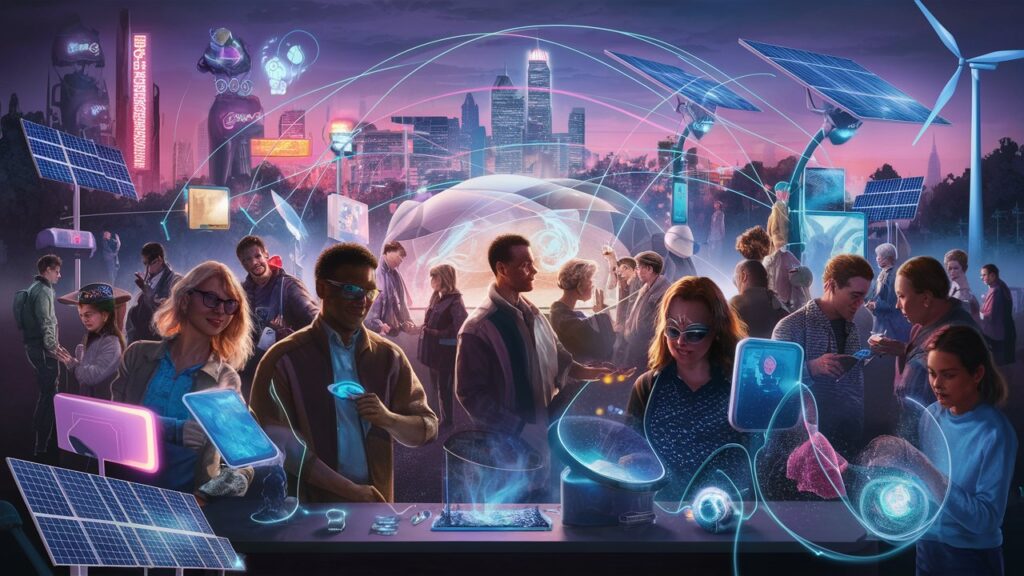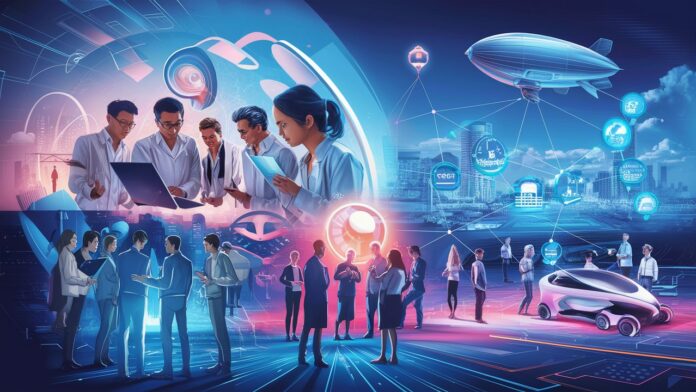Introduction
The world of electronics is evolving at an unprecedented pace, reshaping industries, lifestyles, and global connectivity. From quantum computing to biodegradable circuits, the innovations driving this sector promise to revolutionize how we interact with technology. However, with rapid advancements come challenges—ethical dilemmas, environmental concerns, and the need for equitable access. This article explores the latest trends in electronics, the hurdles they face, and how sustainability is becoming a cornerstone of modern design. Whether you’re a tech enthusiast, industry professional, or simply curious about the future, join us as we unpack the transformative potential of electronics in the 21st century.
1. Semiconductor Innovations: Beyond Moore’s Law
The semiconductor industry has long been guided by Moore’s Law, the observation that transistor density doubles every two years. However, as traditional silicon-based chips approach physical limits, researchers are pioneering alternatives like 2D materials (e.g., graphene) and 3D chip stacking. These innovations aim to boost processing power while reducing energy consumption. Companies like TSMC and Intel are investing heavily in nanosheet transistors and extreme ultraviolet lithography (EUV) to push boundaries further. Meanwhile, neuromorphic computing—inspired by the human brain—promises to revolutionize AI hardware. Yet, challenges like heat dissipation and manufacturing costs remain critical barriers to widespread adoption.
2. The Rise of AI-Integrated Electronics
Artificial intelligence is no longer confined to software; it’s now embedded in hardware. AI chips, such as Google’s TPU and NVIDIA’s Grace Hopper, are optimizing tasks like real-time data processing and machine learning. Edge AI devices, from smart sensors to autonomous drones, are reducing reliance on cloud computing, enhancing speed and privacy. Additionally, self-healing circuits and predictive maintenance systems leverage AI to detect and repair faults autonomously. While these advancements promise efficiency, questions about algorithmic bias, energy demands, and job displacement linger, urging a balanced approach to AI integration.
3. Sustainable Electronics: Tackling E-Waste and Energy Consumption
Electronics account for 53 million metric tons of e-waste annually, a figure projected to double by 2050. To combat this, companies are prioritizing circular economy models, designing products for repair, reuse, and recycling. Innovations like biodegradable PCBs (made from flax or chitosan) and solar-powered devices are reducing environmental footprints. Governments are also stepping in: the EU’s Right to Repair legislation mandates longer product lifespans, while startups like Fairphone focus on modular, ethically sourced smartphones. However, scaling these solutions requires collaboration between policymakers, manufacturers, and consumers.
4. Quantum Computing: From Theory to Practical Applications
Quantum computing, once a theoretical marvel, is now making tangible strides. Companies like IBM, Google, and Rigetti are developing qubit-based systems capable of solving problems deemed impossible for classical computers, such as drug discovery and climate modeling. Quantum supremacy—the point where quantum machines outperform classical ones—has already been claimed, albeit in niche tasks. Yet, hurdles like error rates, cryogenic cooling needs, and high costs persist. As research progresses, hybrid systems combining classical and quantum computing may bridge the gap, unlocking breakthroughs in cryptography, logistics, and material science.
5. The Internet of Things (IoT) and 5G Connectivity
The IoT ecosystem, powered by 5G networks, is expanding into every corner of life. Smart cities use connected sensors to optimize traffic and energy use, while wearable health monitors provide real-time patient data to doctors. Industrial IoT (IIoT) is transforming manufacturing with predictive analytics and robotic automation. However, this hyper-connectivity raises concerns: cybersecurity threats, data privacy breaches, and the digital divide. Ensuring robust encryption protocols and equitable access to 5G infrastructure will be vital to harnessing IoT’s full potential.

6. Ethical Considerations in Electronics Development
As technology advances, ethical dilemmas multiply. Conflict minerals like cobalt and tantalum, often mined in exploitative conditions, remain prevalent in electronics supply chains. Meanwhile, AI-driven surveillance systems and facial recognition tools spark debates over privacy and human rights. Initiatives like the Responsible Business Alliance aim to enforce ethical labor practices, while open-source movements advocate for transparent algorithms. Balancing innovation with accountability will define the industry’s social license to operate in the coming decades.
7. Consumer Trends: Demand for Personalized and Immersive Tech
Today’s consumers crave personalized experiences, driving demand for foldable screens, AR/VR headsets, and voice-activated assistants. Gamers seek ultra-low-latency devices, while professionals prioritize portability and battery life. The shift toward ubiquitous computing—where technology blends seamlessly into daily life—is accelerating, with smart homes and brain-computer interfaces on the horizon. Yet, this trend risks exacerbating screen addiction and digital fatigue, prompting calls for mindful tech usage.
Conclusion
The future of electronics is a tapestry of extraordinary innovation and complex challenges. From quantum leaps in computing to sustainable design principles, the industry stands at a crossroads. Success will depend on harmonizing progress with responsibility—ensuring technologies benefit humanity without compromising ethical or environmental integrity. As consumers, policymakers, and innovators collaborate, the next decade could see electronics evolve from mere tools into catalysts for global equity and resilience.
Frequently Asked Questions (FAQs)
Q1: What’s the next big breakthrough in electronics?
A: Quantum computing and AI-integrated chips are front-runners, with potential to revolutionize fields like healthcare and climate science.
Q2: How can we reduce e-waste effectively?
A: Embrace circular economy practices: buy modular devices, support recycling programs, and advocate for stronger right-to-repair laws.
Q3: Will AI replace human jobs in electronics manufacturing?
A: While AI will automate repetitive tasks, it will also create new roles in AI maintenance, ethical oversight, and R&D.
Q4: Is quantum computing accessible to everyday users?
A: Not yet—current systems are costly and specialized. However, cloud-based quantum services (e.g., IBM Quantum) are making the tech more accessible.
Q5: How secure is IoT technology?
A: Risks exist, but advances in encryption and blockchain are improving security. Users should update firmware regularly and avoid default passwords.
Explore more cutting-edge insights at www.electronmagazine.com.

